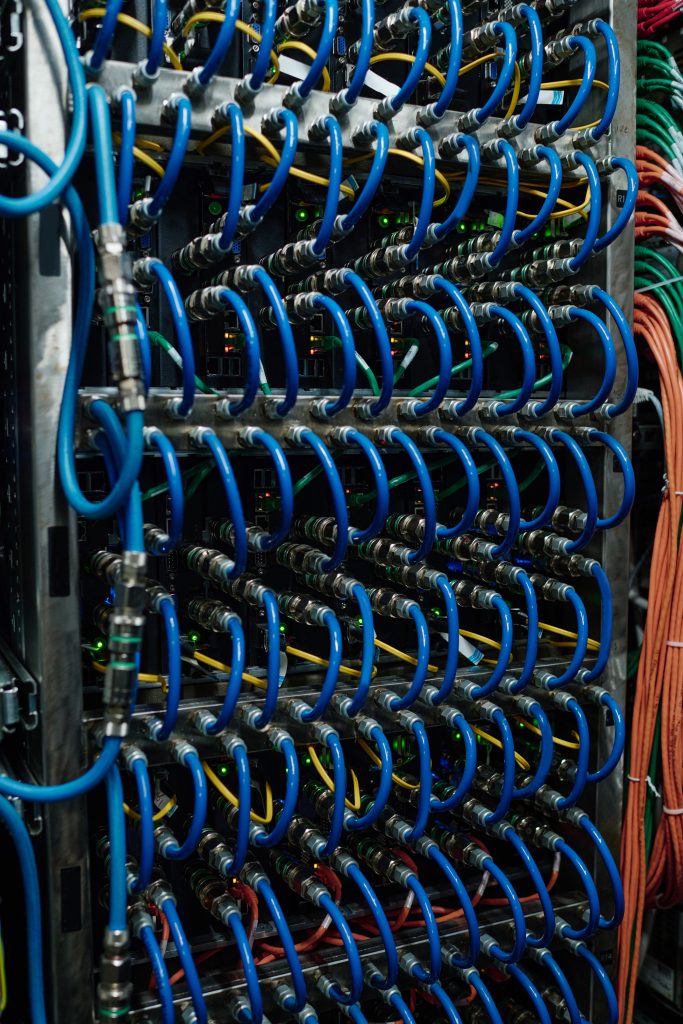In an age where digital communication defines business performance, structured cabling remains the unseen framework behind high-performing systems. While networks grow more complex and data transfers become more rapid, it’s the foundation beneath, the wiring, ports, patch panels, and pathways, that allows everything to work smoothly. Whether a business operates from a small office or a multi-storey building, structured cabling plays a critical role in keeping operations seamless, scalable, and efficient.
Understanding Structured Cabling Systems
A structured cabling system is an organised method of setting up your network infrastructure. Unlike traditional point-to-point setups, this method creates a uniform, modular wiring network that connects all hardware components in a building, such as computers, phones, CCTV, servers, and access points, using standardised elements. This structure allows better organisation, faster troubleshooting, and more straightforward expansion as companies grow or move.

Structured cabling typically includes several subsystems: entrance facilities, equipment rooms, backbone cabling, horizontal cabling, telecommunications rooms, and work-area components. Each segment contributes to how data flows and devices communicate, from the basement of the building to a top-floor desktop.
Why Businesses in Singapore Need It More Than Ever
Singapore’s smart business ecosystem runs on data. From SMEs to MNCs, network performance directly impacts service delivery and productivity. As offices scale, adopt hybrid models, or integrate new technologies, their network demands expand. Without a proper, structured cabling installation, messy wires and makeshift solutions begin to create bottlenecks.

Moreover, sectors like finance, logistics, education, and healthcare require consistent bandwidth, uptime, and minimal interference. Structured cabling in Singapore supports this level of performance through design clarity, faster issue identification, and easier future upgrades.
Key Benefits of Structured Cabling Systems
Many businesses tend to overlook cable infrastructure, focusing on routers, servers, and software instead. However, skipping proper cabling can cost more in the long run. Here’s why structured cabling stands out as an essential asset:
1. Simpler Troubleshooting and Maintenance
When network issues arise, tracing faults becomes far easier. Clear labelling and segmented cable paths mean technicians waste no time guessing which cable runs where. That results in shorter downtimes.
2. Scalable Infrastructure
As companies grow, adding more workstations or moving to cloud-based services requires more data ports and connection points. A structured system allows for smooth integration without rewiring everything from scratch.
3. Long-Term Cost Savings
While initial structured cabling installation might seem like a larger investment, it saves on future repair, maintenance, and relocation costs. Systems designed for longevity offer better ROI over time.
4. Improved Aesthetics and Professionalism
No tangled wires running across the floor. Structured systems are tucked, enclosed, and routed neatly, which not only improves safety but also reflects professionalism during client visits.
5. Reduced Signal Interference
Good cabling reduces electromagnetic interference, especially in high-traffic offices. This directly improves data transmission quality and speed.
What Makes a Structured Cabling Service Reliable
A reliable, structured cabling service doesn’t stop at installation. It begins with site evaluation, understanding the future needs of the business, and then designing a system that supports that vision. Factors that make a vendor trustworthy include:
- Offering cable certifications and testing after setup
- Using top-grade materials and connectors
- Providing documentation for each installed component
- Having a responsive maintenance and support team

Companies like Tele-Info understand that structured cabling is not a one-size-fits-all solution. Their approach includes assessing building layout, scalability requirements, environmental factors, and compliance standards to deliver custom-fit results.
Common Pitfalls to Avoid During Installation
Structured cabling requires more than just running wires through ceilings and floors. Poor planning leads to unnecessary complications down the line. Mistakes to avoid include:
- Overloading cable trays or conduits leads to overheating
- Ignoring the cable bend radius, which affects performance
- Not accounting for future growth and leaving no space for expansion
- Failing to separate power and data lines, resulting in interference
- Neglecting documentation, which complicates future maintenance
These problems typically surface months after an installation, making preventive planning the best long-term approach.
Industries That Depend on Structured Cabling
- Healthcare – Hospitals require real-time data access across departments. Structured cabling ensures minimal latency and system reliability.
- Education – Schools and universities need consistent internet across campuses, with security systems and smart boards connected simultaneously.
- Finance – Banks depend on highly secure and fast networks for transactions, server synchronisation, and customer service operations.
- Retail – From POS systems to digital signage and security, structured networks keep retail environments operational and secure.
- Data Centres – A backbone for cloud computing and data storage, structured cabling allows dense yet manageable setups in server rooms.
What to Expect From a Cabling Project
Choosing a structured cabling provider should come with expectations beyond just cable installation. A full project cycle typically includes:
- Needs analysis and layout design
- Selection of materials based on bandwidth and device load
- Labelling for future-proof maintenance
- Testing for signal strength, speed, and interference
- Documentation with diagrams and cable maps
- Post-installation support
When executed by experienced vendors, such as Tele-Info, structured cabling projects stay on time, meet budget expectations, and offer years of dependable performance.
Why Structured Cabling Is a Business Investment
In many ways, structured cabling is not just a technical requirement. It is a business continuity decision. A poorly managed network affects customer experience, team performance, and even brand image. With growing digitalisation and dependency on cloud platforms, there’s very little room for network errors.
Structured cabling services are designed to eliminate those blind spots. They enable predictability in performance and remove reactive fixes from the IT equation. The initial effort in designing it right pays off through consistency, speed, and simplicity.
Conclusion: Infrastructure Shapes Performance
In fast-paced environments like Singapore, where network expectations are high, investing in proper, structured cabling services is no longer optional. It forms the groundwork for every connected activity, whether it’s a business call, database retrieval, cloud login, or payment processing.
Choosing a reliable provider for structured cabling Singapore allows companies to stop firefighting network issues and instead focus on growth. Structured cabling is more than wires and ports. It is the nervous system of modern business infrastructure.
 Tasselline | Latest Articles By Singaporeans, for Singaporeans Article Site for Singaporeans
Tasselline | Latest Articles By Singaporeans, for Singaporeans Article Site for Singaporeans